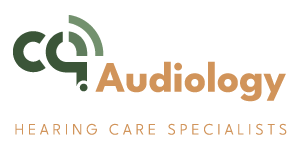Contact Us
We would love to speak with you.
Feel free to reach out using the below details.
Visit our main clinic
- T33 & 34A, City Centre Plaza, 24 Fitzroy Street, Rockhampton, QLD 4700
Get In Touch
- Phone: (07) 4848 6528
- Email: reception@cqaudiology.com.au
Trading Hours
- Mon-Fri 9:00AM - 5:00PM
- Sat 9:00AM - 12:00PM
Get a callback
Fill out the form below and we will contact you as soon as possible!
CQ Audiology Visiting Sites
BARCALDINE
Barcaldine 60 & Better Program
13 Willow Street
QLD 4725
BILOELA
Ace Medical Centre
48 Grevillea Street
QLD 4715
BLACKALL
Blackall Hospital
189 Landsborough Highway
QLD 4472
BLACKWATER
North Blackwater General Practice
14 Blain Street
QLD 4717
EMERALD
Lot 1 Pilot Farm Road
QLD 4720
MOUNT MORGAN
41 Morgan Strreet
QLD 4714
ROCKHAMPON CITY
T 33 & 34A City Centre Plaza
24 Fitzroy Street
QLD 4700
TAMBO
Tambo Multi Purpose Centre
26 Arthur Street, Tambo Queensland 4478
LONGREACH
North & West Queensland Primary Health Sercvies
19 Duck Street, Longreach Queensland 4730
YEPPOON
Keppel Bay Medical Centre
Shopt 26, Keppel Bay Plaza
64-67 James Street
QLD 4703

Experience Unmatched Clarity with Hearing Test in Frenchville Rockhampton
Why Do I Need a Hearing Test?
Are you looking for a hearing test Frenchville – Rockhampton QLD? Have you ever considered how vital your hearing is to your daily life? From enjoying conversations with loved ones to excelling in your workplace, your ability to hear impacts nearly every aspect of your existence. Yet, many people overlook the importance of regular hearing tests. These tests aren’t just for those who notice hearing loss; they’re a crucial part of maintaining your auditory health. Early detection can prevent further damage and help keep you connected to the world around you. But how often should you get tested, and what signs might indicate it’s time for a check-up? Let’s explore why staying on top of your hearing health could make a significant difference in your life.
Importance of Regular Hearing Tests
Regular hearing tests are essential to catch and address any changes in your hearing early on. As you age, particularly if you’re over 60, annual checkups become crucial to monitor your hearing health. This routine screening helps in identifying any decline in your hearing capacity, allowing for early intervention which is key to preventing further deterioration.
For younger adults, testing every 3-5 years is advisable. This frequency ensures that you’re keeping tabs on your hearing health and can address any concerns before they escalate. It’s not just about catching hearing loss early; these tests can adapt your lifestyle to preserve your current hearing levels and overall well-being.
Early testing in children is especially vital. It plays a significant role in their language development and educational achievements. Detecting issues early can lead to timely and effective treatments, making a significant difference in a child’s life. Moreover, regular hearing assessments can help in diagnosing other pre-existing conditions that may be contributing to or exacerbating hearing loss, further highlighting the importance of maintaining a schedule for these tests.
Signs You Need a Hearing Test
While it’s important to schedule routine hearing tests, you should also be aware of specific signs that indicate an immediate need for a hearing assessment. If you’re finding it hard to follow conversations, especially in noisy settings, it might signal that your hearing isn’t as sharp as it used to be. This difficulty can be frustrating and may mean it’s time to check your hearing health.
Another clear sign is tinnitus, which manifests as ringing or buzzing in your ears. While it might seem minor, tinnitus can be a symptom of underlying issues that a hearing test can help diagnose. Furthermore, if you often ask people to repeat themselves or find yourself cranking up the volume on your TV or radio more than usual, these are practical indicators that you shouldn’t ignore.
Parents should also watch for signs in their children, such as delays in speech or language development, which could suggest hearing problems. Remember, catching hearing loss early through a test can prevent further damage and significantly improve both your, or your child’s, quality of life. So, don’t hesitate to arrange a hearing test if these signs resonate with your experience.
How Hearing Tests Work if you live in Frenchville
To understand how hearing tests function, it’s essential to know that they evaluate your ability to perceive various sounds and determine the type and severity of any hearing loss you may have. During a typical assessment, an audiologist, who’s a professional trained in hearing health, will conduct the test. This often involves you wearing headphones in a soundproof room. You’ll listen to sounds at different volumes and pitches, and indicate when you can hear them.
The process starts with simpler tones and gradually includes speech to assess how well you can understand words amidst varying levels of background noise. The audiologist will use your responses to create an audiogram, which is a chart that visually represents your hearing capabilities across different frequencies. This data is crucial as it pinpoints specific areas of hearing loss.
Your audiologist will then review the results with you, explaining what each part of the audiogram suggests about your hearing health. This discussion is vital, as it helps you understand any issues and consider necessary interventions. Remember, regular hearing tests are key to catching any decline in your hearing early, potentially saving you from further auditory damage.
Types of Hearing Loss
Hearing loss comes in several forms, including conductive, sensorineural, mixed, congenital, and acquired types. If you’re facing issues with hearing, it’s crucial to understand these distinctions, as they guide how your condition is treated.
Conductive hearing loss occurs when there’s a problem with the outer or middle ear. This could be due to earwax blockage, fluid in the middle ear, or damage to the eardrum. These issues prevent sound from being efficiently conducted through the ear, making it hard to hear soft sounds and muffling louder ones.
Sensorineural hearing loss, on the other hand, affects the inner ear or the auditory nerve itself. It’s usually caused by damage to the hair cells in the cochlea or the nerve pathways to the brain. You might find it tough to pick out words against background noise or hear higher pitched sounds.
Mixed hearing loss combines elements of both conductive and sensorineural loss. It means you’re dealing with issues in both the outer or middle ear and the inner ear or auditory nerve.
Lastly, congenital hearing loss is present at birth, whereas acquired hearing loss develops after birth, often due to aging, noise exposure, or injury. Understanding which type you’re experiencing helps pinpoint the best treatment approach.
Hearing Tests for Different Ages
Depending on your age, you’ll need different types of hearing tests to accurately assess your hearing health. If you’ve got a newborn or a toddler, they might undergo objective tests like Otoacoustic Emissions (OAE) or Auditory Brainstem Response (ABR). These tests are crucial because they don’t require active responses from your child, who mightn’t yet be able to participate actively in standard testing procedures.
As kids grow into older children, the approach shifts slightly. They’re usually able to undergo pure tone audiometry, where they’ll indicate when they hear various sounds through headphones. This test measures their hearing levels across a range of frequencies and is straightforward enough for school-aged children to handle.
Once you hit adulthood, pure tone audiometry remains the standard method for assessing hearing. It’s effective and gives precise information about your hearing thresholds. This type of testing continues to be relevant as you age, providing valuable insights into how your hearing might be changing over the years.
Understanding Your Audiogram
Let’s delve into how to interpret your audiogram, a crucial step in understanding your hearing health. An audiogram is essentially a graph that plots your hearing sensitivity across various frequencies, typically ranging from low to high. Each frequency is tested to determine the softest sound you can hear, measured in decibels (dB). These thresholds are marked on the audiogram to illustrate your hearing ability at different pitches.
The chart usually includes results for both air and bone conduction, which help to distinguish between the types of hearing loss—conductive, sensorineural, or mixed. Air conduction tests how well sound travels through the outer and middle ear. Bone conduction, on the other hand, tests the direct transmission of sound vibrations to the inner ear, bypassing the outer and middle ear.
Your audiogram will display these thresholds for each ear, enabling you to see how your hearing compares on both sides. If the thresholds vary significantly between ears or are generally high across frequencies, it indicates a hearing loss.
Understanding the specifics of your audiogram is vital. It doesn’t just reveal if you have hearing loss, but also pinpoints the type and extent, which is essential for developing an effective treatment plan.
Where to Get a Hearing Test
You can easily book a hearing test at an audiology clinic without needing a referral from a doctor. This makes it convenient for you to check your hearing whenever you suspect a problem or just want to ensure everything is alright. Remember, catching issues early can make a huge difference.
If you’re eligible, the Australian Government Hearing Services Program offers fully subsidised tests, which means you won’t have to pay anything out of pocket. You should check your eligibility and apply on their website to take advantage of this benefit. On the other hand, if you need more specialized assessment, Medicare rebates may be available, but you’ll require a referral from an Ear, Nose, and Throat (ENT) specialist for that.
Finding a clinic near you that offers hearing tests is straightforward. Use the healthdirect Service Finder online to locate nearby audiology services. This tool is extremely helpful and saves you the hassle of manually searching for clinics.
Don’t underestimate the importance of regular hearing tests. They’re key to maintaining your auditory health and ensuring you can enjoy quality life experiences without any hindrance from hearing issues.
DISCLAIMER: The content on our site is intended for educational purposes only and should not be interpreted as an endorsement or recommendation of any treatments or products without a comprehensive hearing assessment. Users should seek professional advice and fully understand any potential side effects or risks before starting any treatment. Products mentioned on our site are not available for purchase by the public without prior consultation with a hearing health expert.
